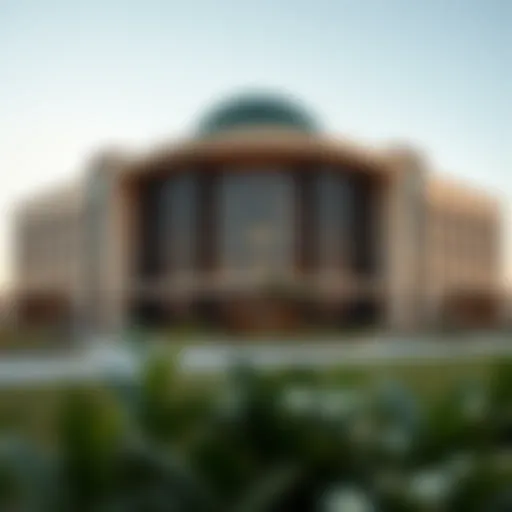Exploring Dubai's Cityscape: Architecture and Trends


Intro
Dubai, a city known for its remarkable transformations, continues to redefine urban living and architectural aesthetics. This metropolis stands at the crossroads of tradition and modernity, boasting a skyline that seems to touch the heavens. Skyscrapers clad in glass and steel, such as the iconic Burj Khalifa, symbolize what ambition can achieve. Yet, there is much more lurking beneath the shimmering surface.
The intricate tapestry of Dubai's architectural landscape tells stories of innovation, technology, and culture. It’s not merely the standout structures that deserve attention; it is also the multitude of emerging developments that shape the way people live, work, and invest in this dazzling city. Understanding these dynamics, alongside the real estate trends, is vital for anyone looking to make informed decisions in this vibrant marketplace.
As investors, agents, and buyers delve into the world of property in Dubai, they will find it necessary to assess current market conditions and future projections. This exploration is intended to illuminate the factors driving change in the city's real estate sector. From areas that promise high returns to neighborhoods on the rise, insights gathered here will provide the essential knowledge that can lead to strategic investments and successful ventures. In this evolving economic environment, knowledge is power.
Give this article a read if you wish to gain a comprehensive understanding of Dubai’s architectural beauty, shifting market trends, and the investment opportunities waiting to be seized.
Prelims to Dubai's Cityscape
Dubai's cityscape is not just a visual feast but also a narrative woven with history, culture, and modern ambitions. The skyline, filled with iconic structures and innovative designs, stands as a testament to the city’s rapid evolution and attractiveness to investors and tourists alike. In this article, we’re going to peel back layers of Dubai’s extraordinary architecture, explore the trends that are reshaping it, and offer insights into the real estate market that’s riding the wave of this urban renaissance.
Historical Context
To truly grasp the current dynamics of Dubai's cityscape, one must first consider its historical context. Once a humble fishing village established in the early 18th century, the city began to undergo significant changes with the discovery of oil in the 20th century. This newfound wealth facilitated investments into infrastructure, transforming it into a bustling metropolis.
It’s not just about oil wealth, though; Dubai’s strategic location has made it a pivotal trade hub between East and West. So, the blend of tradition and modernization is palpable. For instance, although structures like the Burj Khalifa dominate the skyline today, remnants of the city’s past, like the Al Fahidi Historical Neighborhood, remind us of its humble beginnings. The architectural evolution isn’t just an aesthetic journey; it reflects the ambitions of its people and their adaptability to global changes.
Modern Transformation
Fast forward to the present, and Dubai is a beacon of modernity. The city's skyline has transformed dramatically over the past few decades, resulting in a blend of styles that incorporate both local and international influences. The wow factor found in buildings such as the Burj Al Arab and the Dubai Frame is amplified by an infrastructure designed to support tourism, trade, and living standards unseen in many parts of the world.
What’s particularly striking is how this transformation is not merely about reaching new heights; it’s about creating a lifestyle that attracts the world’s elite, from international business tycoons to celebrities. Luxury residential areas like the Palm Jumeirah showcase this ambition, marrying high-end living with breathtaking coastal views. Moreover, in a city where “new” often means “better,” ongoing projects continue to reshape the real estate landscape, with sustainability and smart technologies taking the forefront of future developments.
In summary, Dubai’s cityscape serves as both a remarkable accomplishment of engineering and an evolving narrative of cultural juxtaposition. Understanding its history and ongoing transformation is key for investors and enthusiasts alike, giving perspective on why this city has become a global icon.
Architectural Highlights
The architectural scene in Dubai carries immense significance as it showcases innovation, blending local tradition with modern design. The structures here speak to the emirate’s ambition and drive for excellence not only in aesthetic terms but also in sustainability and functionality. Every building tells a story, reflecting the aspirations of a city that aims to be a leader on the global stage. The highlighted architectural feats not only change the skyline but also create a sense of place and identity for residents and visitors alike. Understanding these architectural highlights is crucial for anyone interested in the real estate market, as they often dictate property value, demand, and desirability.
Burj Khalifa: The Pinnacle of Design
Standing tall at an awe-inspiring height, Burj Khalifa is more than just a building; it's a testament to human ingenuity. Completed in 2010, this skyscraper is not only the tallest in the world but also incorporates various architectural features that push the boundaries of design. The layered, spiraling structure represents the desert flower, symbolizing growth and beauty from humble beginnings.
Investors view the Burj Khalifa as a cornerstone in Dubai's property landscape. Its proximity to attractions and high-value residences elevates nearby property values. According to data from various real estate agencies, properties located around this iconic tower frequently command premium prices. The Burj Khalifa is indeed an investment magnet, drawing people not just for its breathtaking views but for the promise of capital appreciation.
Palm Jumeirah: A Visionary Landscape
Palm Jumeirah, with its unique palm tree shape, is an engineering marvel that has transformed Dubai’s coastline. This man-made island is dotted with luxury hotels, private residences, and high-end retail outlets, acting as a major draw for tourists and residents alike. Its construction showcased the emirate’s ability to push the limits of traditional architecture and urban planning.
A special feature of Palm Jumeirah is its vast array of luxury properties that cater to affluent buyers. Living here means embracing a lifestyle defined by recreational opportunities and unparalleled views of the sea. The real estate market in Palm Jumeirah remains robust, as properties here frequently sell at substantial premiums compared to other areas due to their exclusivity and scenic surroundings.
Dubai Marina: A Blend of Luxury and Urbanity
Dubai Marina encapsulates the essence of modern urban living, merging sleek skyscrapers with waterfront promenades. This area has evolved into a symbol of luxury, boasting numerous residential towers, each with distinct architectural styles. The marina's design facilitates a lively environment, replete with the hustle of cafes, restaurants, and retail spaces along the waterfront.
Investors are particularly drawn to Dubai Marina for its vibrant lifestyle and potential for high rental yields. Properties in this area have consistently shown growth in value, driven by demand from expats and locals alike who are keen on waterfront living. The ongoing infrastructure enhancements and community developments continue to heighten the appeal, ensuring that Dubai Marina remains a focal point of investment interest in Dubai's real estate landscape.
"The architectural highlights of Dubai encapsulate innovation and luxury, seamlessly blending tradition with the contemporary."
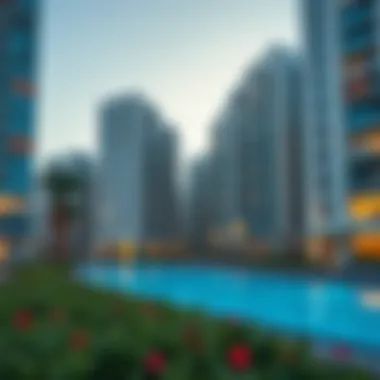
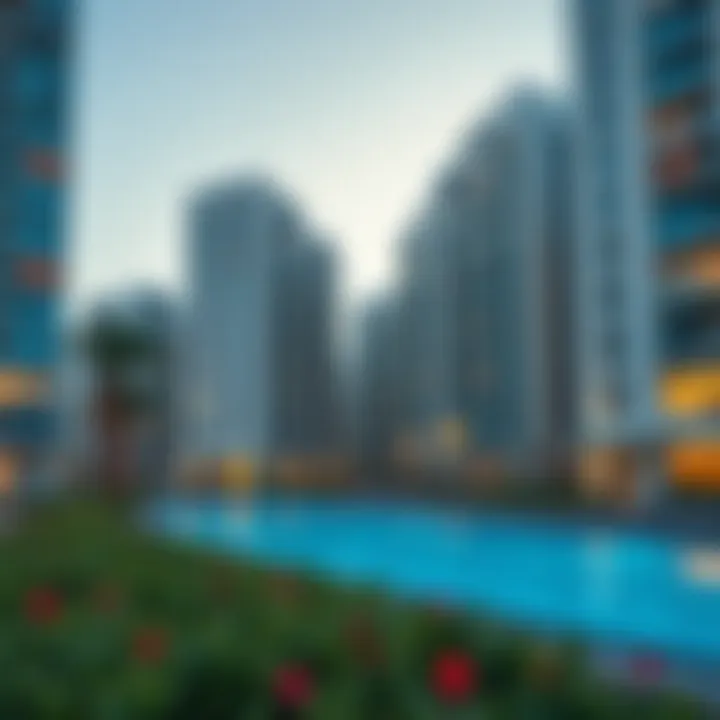
In summary, these architectural highlights do not merely embellish Dubai's skyline; they serve as focal points for investment and urban growth. Understanding their significance is essential for investors, agents, and buyers keen to navigate the real estate market with informed decisions. They represent the ongoing metamorphosis of a city that continually strives to redefine its identity.
Emerging Neighborhoods
The term "Emerging Neighborhoods" hsa taken on a significant role in the conversation surrounding Dubai's growth as a global city. These areas reflect not only the vibrant spirit of the city but also the shifting demands of its residents and investors alike. As Dubai continues to expand, these neighborhoods serve as focal points that combine lifestyle, investment potential, and cultural integration. Understanding these areas is crucial for anyone looking to navigate the complex and dynamic landscape of Dubai’s real estate market.
Downtown Dubai: Heart of the City
Downtown Dubai stands as the epicenter of luxury, culture, and lifestyle embodies the very essence of what it means to live in Dubai. It is home to several key attractions like the Burj Khalifa, which towers above the skyline, and The Dubai Mall, one of the largest shopping centers in the world. This neighborhood is not just a tourist hub but also a vital residential area for many professionals and families seeking to enjoy the city's cosmopolitan flair.
Being in Downtown means having immediate access to entertainment facilities, parks, and social interactions right at one's doorstep. This high demand has led to a rise in property values, making it a prime spot for investors. Furthermore, projects like the Dubai Opera and the newly introduced Mohammed Bin Rashid Library enhance the cultural fabric of the area, further attracting global citizens.
Dubai Creek: Balancing Tradition and Modernity
Dubai Creek serves as a fascinating case study in architecture and urban planning where tradition meets the cutting-edge. It's one of the oldest parts of the city, steeped in history and culture, yet it is currently experiencing significant redevelopment. The area has transformed by integrating modern amenities while retaining its rich heritage, aptly showcasing Dubai's dual essence as a place of future-forward thinking yet grounded in its past.
One of the standout projects includes the Dubai Creek Tower, a colossal structure designed to eclipse even the Burj Khalifa. The area also includes plans for a new waterfront development that aims to blend leisure and residential spaces seamlessly. Such initiatives have made Dubai Creek an attractive investment area, appealing to those who value historical context paired with contemporary living.
Advantages of Dubai Creek:
- Cultural significance nurtures a unique sense of community.
- Modern transportation access, with the expansion of the metro enhancing connectivity.
- Potential for property appreciation, as demand increases with ongoing developments.
Jumeirah: Coastal Luxury Redefined
Jumeirah has often been synonymous with glamour and opulence in Dubai. Known for its pristine beaches and luxurious lifestyle, it has emerged as a beacon for expatriates and affluent individuals seeking a premium living experience. The tranquil vibe, coupled with spectacular waterfront views, is attracting young professionals and families alike.
Most notably, Jumeirah is home to the iconic Burj Al Arab, a symbol of luxury hospitality, which attracts both tourists and upscale buyers. The neighborhood’s real estate offerings range from lavish villas to chic apartments, all of which embody contemporary design mixed with traditional influences.
Investors are particularly interested in Jumeirah due to its established reputation and economic resilience. With upcoming developments, including numerous boutique hotels and retail spaces, the area promises appreciable growth, making it a smart choice for property investment.
Key Considerations for Investment in Jumeirah:
- Strong rental demand, driven by its prime location and facilities.
- High standard of living leading to sustained interest from premium buyers.
- Regulatory framework supporting foreign investments, aiding in smoother transactions.
In summary, the emergence of these neighborhoods—Downtown Dubai, Dubai Creek, and Jumeirah—illustrates how Dubai maintains its pulse in innovation, lifestyle, and real estate. Each area offers unique opportunities and challenges, further enriching the tapestry that is Dubai’s urban landscape.
Sustainability in Urban Development
Sustainability is becoming increasingly central in urban planning, especially in rapidly developing cities like Dubai. An urban environment that prioritizes sustainable development is not just about preserving nature; it also fosters economic growth, enhances quality of life, and contributes positively to social equity. As Dubai continues to evolve, addressing sustainability is vital for managing resources efficiently, reducing environmental impact, and preparing for future challenges. It allows for a proactive approach in addressing the demands of a growing population while maintaining the city’s identity.
Green Buildings and Initiatives
In Dubai, green buildings are gaining traction, driven by both government regulations and a shift in investor attitudes. The Dubai Green Building Regulations encourage developers to adopt environmentally friendly designs, which often include energy-efficient systems, sustainable materials, and water-saving technologies. One notable example is the The Sustainable City, which incorporates extensive renewable energy use, green roofs, and a commitment to maintaining biodiversity.
In choosing to invest in green developments, investors not only reduce operational costs in the long run but also position themselves to capitalize on the increasing demand for sustainable living spaces. For residents, these initiatives create healthier environments that significantly improve air quality and reduce heat island effects.
"The benefits of sustainability are not just environmental; they can also be economic drivers amid an eco-conscious public."
Key aspects of these green buildings often include:
- Energy Efficiency: Utilizing solar panels, high-efficiency HVAC systems, and natural lighting to reduce energy consumption.
- Water Management: Implementing rainwater harvesting and smart irrigation technologies to conserve water.
- Sustainable Materials: Sourcing local and recyclable materials to minimize environmental footprints during construction.
Smart City Concepts
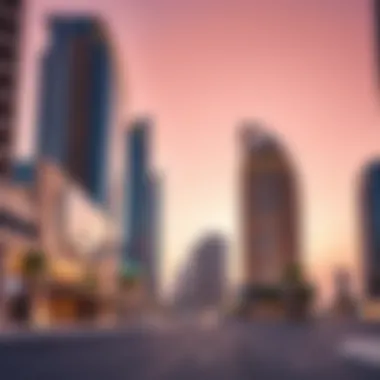
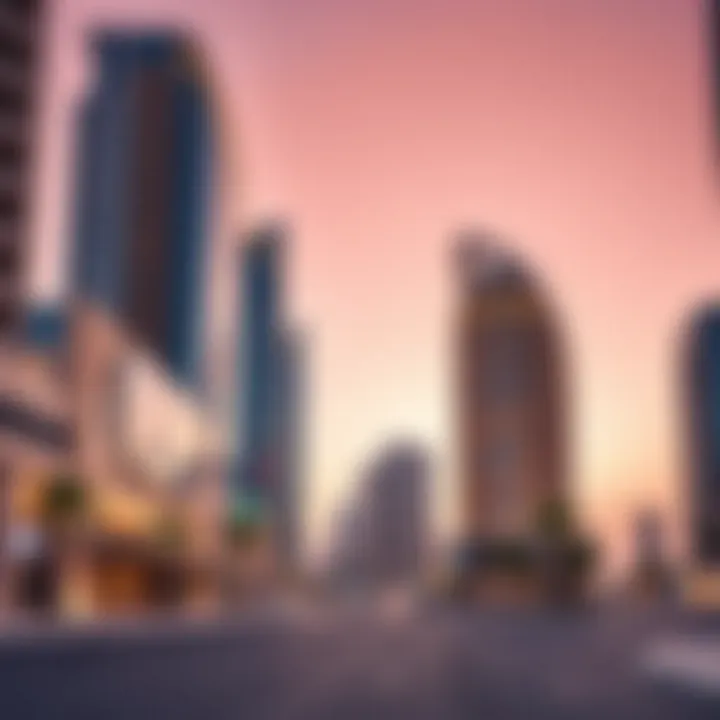
Dubai is also at the forefront of adopting smart city technologies that enhance urban living while promoting sustainability. The use of innovative technologies in managing city infrastructure aims to improve efficiency and reduce carbon footprints. Initiatives like the Dubai Smart City project integrate IoT (Internet of Things) technologies and data analytics to optimize services ranging from transportation to waste management.
By incorporating smart grids, enhancing public transportation options, and utilizing AI for traffic management, Dubai paves the way for a more responsive urban landscape. These concepts not only make life easier for residents but also appeal to savvy investors looking for properties that benefit from modern, efficient city services.
Highlights of Smart City developments include:
- Automated Public Services: Mobile applications that allow residents to access city services easily, such as paying bills or reporting issues.
- Smart Transportation: Integration of real-time passenger information systems that improve public transit efficiency and reduce congestion.
- Energy Management Systems: Technologies that monitor and manage energy consumption across various sectors, promoting energy savings.
Overall, as Dubai's urban landscape grows and transforms, prioritizing sustainability through green buildings and smart city initiatives is not merely a trend, but a necessity for ensuring a viable future.
Real Estate Market Trends
Understanding the real estate market trends in Dubai is vital for investors, agents, and analysts due to the city’s dynamic environment and rapid development. The market constantly shifts based on local and global influences, making familiarity with these trends crucial for anyone involved in property investments. This section breaks down the current dynamics, potential investment opportunities, and future insights into Dubai’s real estate landscape.
Current Market Dynamics
Dubai's real estate landscape is a reflection of both local aspirations and international interest. The interplay between supply and demand shapes market dynamics significantly. The influx of expatriates seeking housing and an increasing number of tourists boost rental prices, while new developments seem to keep pace, maintaining equilibrium in the market.
A noteworthy observation is the rise in luxury property sales, catering to a higher net worth population. The preference for high-end amenities and locations, such as the Burj Khalifa vicinity and Palm Jumeirah, has continued unabated, signaling sustained demand.
Moreover, government initiatives aimed at boosting homeownership are paying dividends. Schemes facilitating easier access to mortgages, combined with competitive interest rates, are fostering a wave of first-time homebuyers.
“The real estate market in Dubai is akin to a living organism; it thrives and adapts constantly, responding to changes both locally and globally.”
Another key factor is the technological aspect. Digital platforms and online property listings have changed how buyers and sellers connect. Virtual tours and augmented reality tools are becoming standard practice, enhancing the buying experience.
Investment Opportunities
When examining investment opportunities in Dubai real estate, one should consider several critical factors:
- Emerging Areas: Communities like Dubai Hills Estate and Dubai South are gaining traction among investors, offering more affordable pricing without compromising on quality.
- Off-Plan Developments: Investors often look toward off-plan properties that promise significant capital appreciation. This can be a double-edged sword, as market conditions can shift before the completion date, making due diligence essential.
- Luxury Segments: As demand for luxury homes continues to increase, placing bets on high-end developments can yield lucrative returns. Properties in prestigious districts or with unique architectural styles often see quicker turnover and higher margins.
- Commercial Real Estate: The growth in Dubai’s economy also translates into opportunities within commercial sectors, especially retail spaces influenced by tourism and local consumerism.
Investors should actively monitor market trends and demographic shifts to collaborate with the right developers and identify promising properties. Institutions and private equity firms are leaning more towards Dubai, marking a trend that others are likely to emulate.
Future Projections and Insights
Looking ahead, the future of Dubai's real estate market appears solid yet requires caution. Several factors are expected to influence its trajectory:
- Expo 2020 Aftermath: As the world regains momentum post-pandemic, the success of Expo 2020 will likely result in long-term commercial benefits, attracting further investment.
- Sustainability Practices: The global shift towards sustainability will see Dubai increasingly focusing on eco-friendly building practices. Investors prioritizing sustainability offerings may stand to benefit, given the rising demand for green buildings.
- Regulatory Changes: Changes in policies and regulations, like easing property ownership laws for non-residents, could enhance market competitiveness and innovation.
- Technological Integration: The reliance on digital platforms and smart technologies will only increase. Future developments will focus not just on aesthetics but also on integrating smart home technologies and sustainable practices.
For more insights, the following resources can be useful:
Understanding these aspects is like holding a compass in an ever-evolving market; it helps navigate the complexities of one of the world's most fascinating real estate markets.
Cultural Influence on Architecture
Understanding how culture weaves itself into the architecture of a place is critical when exploring a city like Dubai, which stands as a symbol of modernity enriched by its diverse heritage. The cityscape reflects an intricate tapestry of cultural influences that shape its buildings, public spaces, and even the urban planning itself. This integration not only adds an aesthetic charm but also serves a functional purpose, providing a sense of identity and continuity to the rapid changes in urban design. For investors and analysts, recognizing these cultural elements can offer insights into how developments are likely to progress, appealing to a broader audience.
Integration of Traditional Elements
Traditional architecture often speaks volumes about a city’s history and cultural roots. In Dubai, you can see elements reminiscent of Bedouin heritage, Islamic art, and even regional influences in modern constructions. Buildings like the Al Fahidi Historical Neighborhood echo the simple yet elegant design principles of the past, with wind towers and intricate mashrabiyas, designed to combat the warm climate while allowing light and air to circulate. These traditional elements do not simply serve decorative purposes; they reflect a deep respect for the cultural past that resonates with both residents and visitors.
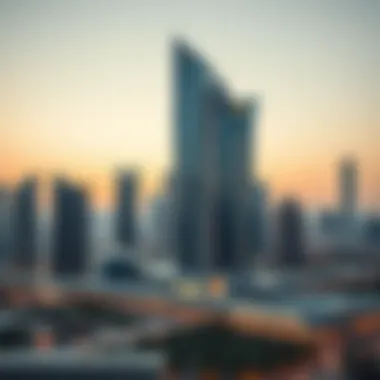
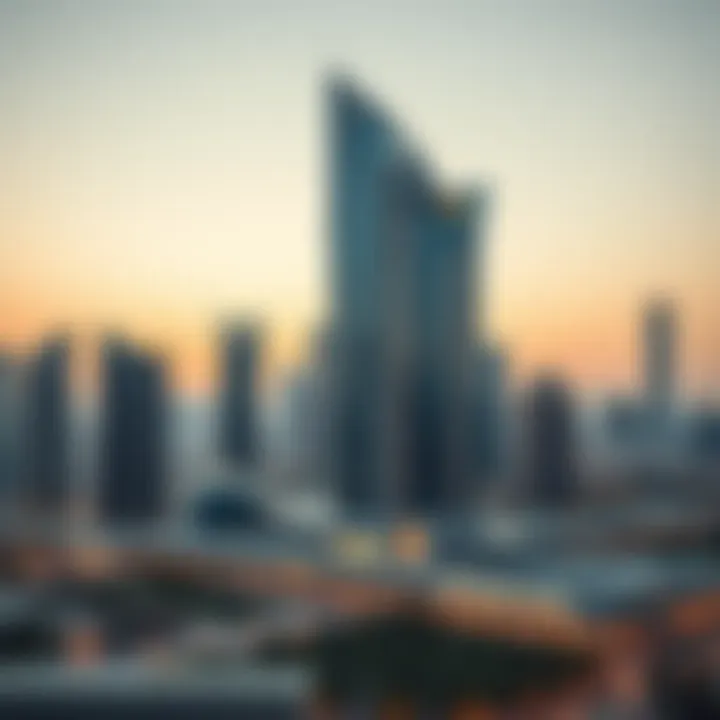
In terms of economic benefits, incorporating traditional designs can enhance property values by appealing to those seeking authentic experiences. For example, luxury developments that reflect these cultural elements can attract buyers looking for a unique blend of modern and traditional living, creating a niche market. Moreover, such architecture can serve as a draw for tourism, leading to increased foot traffic in adjacent neighborhoods and benefiting local businesses.
Impact of Globalization
Globalization has painted a complex picture in Dubai’s architectural landscape. On one hand, the influx of international architects and builders has introduced innovative styles and sustainable technologies, radically shifting the skyline. On the other hand, it has sometimes led to a dilution of local culture as foreign elements dominate some areas. Buildings like the Burj Al Arab showcase this tension perfectly; while it is an icon of luxury and modern engineering, its exterior design still nods to traditional Arab sailing vessels, showcasing a blend of the global and the local.
This duality creates a conversation on adaptation; Dubai's approach to globalization is strategic. By embracing global trends while also incorporating local aesthetics, the city becomes a canvas that portrays a dynamic identity. Investors should take note of this delicate balance. Projects that can successfully blend local tradition with modern design are likely to resonate better in the market.
In summary, the cultural influence on architecture in Dubai is not just a backdrop; it is essential in understanding the city’s current and future trajectory. As global trends continue to evolve, the challenge will be maintaining the cultural fabric that makes Dubai distinct while embracing innovation.
Challenges and Future Directions
Dubai stands at a crossroad of unprecedented growth and complex challenges. The stunning architectural feats and luxurious lifestyle it offers often hide underlying issues that must be addressed. In the rapidly transforming landscape of this vibrant city, the considerations tied to urban sprawl and economic fluctuations reveal both hurdles and pathways for future development. Understanding these challenges is essential for investors, urban planners, and residents alike as they navigate the intricate tapestry of Dubai’s cityscape.
Urban Sprawl and Infrastructure Strain
As the city continues to attract residents and tourists from around the world, urban sprawl has become a pressing concern. The relentless expansion leads to a variety of significant strains on existing infrastructure. Roads, public transport, and utilities struggle to keep pace with the growing population, causing congestion and service disruptions that can mar the modern experience Dubai promises.
The challenge lies not only in accommodating a burgeoning populace but also maintaining the high standards of living that have come to symbolize Dubai. Here's a closer look at the key aspects of this issue:
- Traffic Congestion: Major highways are often gridlocked, especially during peak hours, creating a frustrating experience for commuters.
- Public Transport Pressure: While Dubai’s metro system is a grand endeavor, the demand often exceeds capacity, leading to overcrowded trains and delays.
- Resource Management: Water and electricity supply must evolve to meet increasing demands, which can strain the existing infrastructure, hindering sustainable growth.
To mitigate these issues, strategic planning and innovative solutions need to be prioritized. This can include developing new public transport lines, implementing traffic management systems, and scaling utility services effectively.
Adapting to Economic Shifts
Another layer of complexity comes from the need to adapt to regional and global economic changes. The economic climate isn’t static; it ebbs and flows, often leaving cities scrambling to keep up with shifting dynamics.
For Dubai, important factors include:
- Market Volatility: The real estate market can be particularly fickle, with fluctuations driven by both local developments and international trends. Investors need to be astute and adaptable to seize opportunities as they arise.
- Diversification Efforts: As the emirate strives to lessen its dependency on oil revenues, new sectors like technology, tourism, and finance are being emphasized. However, transitioning can be tricky, necessitating a workforce skilled in diverse fields.
- Global Economic Factors: Fluctuations in oil prices, geopolitical tensions, and global economic trends can impact Dubai’s growth trajectory. Stability in these areas is crucial for long-term planning.
Finding strategies to adapt to these economic shifts involves consistent evaluation and flexibility in policy-making, supported by a robust framework for economic resilience.
Finale: The Evolving Narrative of Dubai Cityscape
The journey through Dubai's ever-changing cityscape sheds light on numerous factors that have contributed to its unique identity. This conclusion aims to weave together the threads of architectural magnificence, urban planning challenges, and real estate prosperity. The narrative of Dubai is not merely a story of progress but a testament to resilience, innovation, and a willingness to embrace change.
As the world watches, Dubai continues to redefine urban living, capturing the imagination of investors, buyers, and analysts alike. Recognizing the importance of sustainability and community in urban design stands vital in understanding the future of the city. Local governance and private-sector collaboration play critical roles in translating ambitious visions into practical realities.
"Dubai's architectural landscape is a mirror reflecting its ambitions, showcasing both its heritage and its aspirations for the future."
Reflections on the City’s Journey
Dubai's evolution from a humble fishing village to a global metropolis exemplifies adaptability. The rich cultural history intertwined with modern aspirations has forged a constructive dialogue between the past and a futuristic outlook. Significant milestones mark Dubai's trajectory, such as the completion of the Burj Khalifa, which serves as a symbol of strength and soaring aspirations. This growth is marked by substantial investments in infrastructure, attracting not just millions of tourists but also a workforce eager to contribute.
Beyond the aesthetic, these architectural wonders speak volumes about social mobility and economic opportunity. As Dubai hosts key business events and trade exhibitions like Expo 2020, it unveils the importance of positioning itself on the global stage, further attracting diverse investments. The response from both the local populace and expatriates has created vibrant neighborhoods that blend innovation with a sense of community.
The Future of Urban Living in Dubai
Looking ahead, the landscape of Dubai is expected to evolve even further. Innovations in green technology and smart city initiatives are set to change the experience of urban life. The anticipatory design of future projects aims to integrate sustainable practices at their core—think solar-powered buildings and a robust public transport system. This pivot towards eco-friendly living not only aligns with global trends but also resonates well with the preferences of discerning buyers looking for investment opportunities with long-term viability.
Moreover, as urban migration continues to shape demographic patterns, the demand for personalized living environments will rise. Investors should keep an eye on emerging neighborhoods that promise sophisticated amenities and accessibility without sacrificing the local charm that Dubai is known for.
To wrap it all up, understanding Dubai's cityscape is essential for anyone eyeing the opportunities that lie within. The intersection of architectural brilliance, cultural significance, and economic development makes this city a compelling case study. Whether one is an investor, a resident, or simply an admirer of modern urbanization, banks of knowledge await at every turn in Dubai's spectacular skyline.
For more on Dubai's journey and insights into its property market, you can explore resources from Wikipedia, Britannica, and read discussions on Reddit.
While the future may hold uncertainties, one thing seems clear: the narrative of the Dubai cityscape will continue to unfold, weaving new stories of ambition, resilience, and success.

